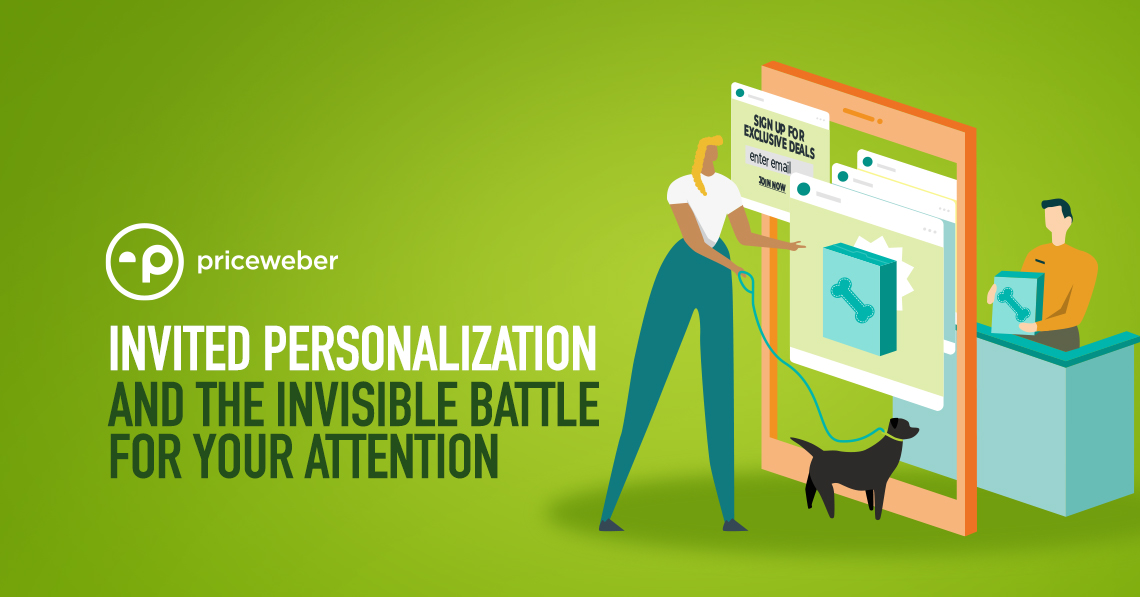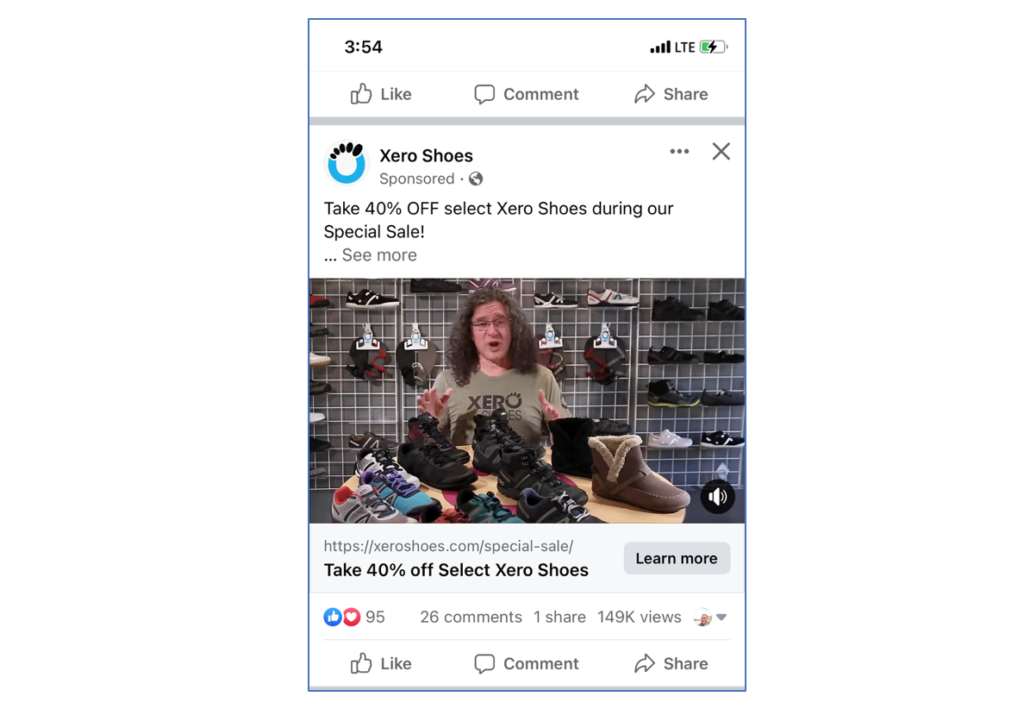There’s an invisible battle being waged for your attention in the background of the internet. Brand websites, social media apps, and search engines are all vying for your attention by applying algorithms that facilitate showing you content based on the probability that you’ll want to see it. In today’s edition of Plain Talk, we’ll walk you through the combatants, share their battle plans and arm you with all the knowledge you need to understand where digital targeting is evolving and how to be one of the good guys.
Speaking of good guys
In the internet privacy battle, there are traditional forces of good and evil. The good guys practice “invited personalization,” which transparently collects bits of data about you with your permission. This aids the process of making your on-site customer experience (CX) and relationship with the brand better and also increases the probability you’ll buy something. The competing “bad guy” concept involves tracking users across multiple sites without their consent and then selling that data to anybody who wants to use it for targeting users. For the purposes of this article, we’ll call the second one “uninvited targeting.” We use the word targeting as opposed to personalization because personalization implies an attempt to make content you like, whereas targeting is more like a hit was put out on you by internet bounty hunters. Let’s look a little deeper.
In this article
-
What is invited personalization?
-
Uninvited targeting – permissionless data where you are the product
-
Cookies and the dawn of the age of invited personalization
-
Just because you can … avoiding the pitfalls
What is invited personalization?
Essentially, invited personalization is a way to collect first-party data about consumers by inviting them to share it. This could be as part of membership in a branded “club,” downloading an app in exchange for a discount, or simply so that the brand can offer their customer a better experience. The critical differentiator of invited personalization is that because customers have volunteered to engage with your brand, they expect to be pinged periodically. They’ve basically agreed to engage in a long-term conversation between brand and customer. Since first-party data is already the gold standard for consumer data and will become increasingly important to marketers in the near future, practicing invited personalization makes a lot of sense.
For example, let’s say you visit an online shoe retailer, and the site offers you a 10% discount for signing up for email offers. You were close to buying a pair of shoes you really liked, but you left them in your shopping cart without completing the purchase. Later, you receive an email from the retailer, engaging you by name, thanking you for signing up for offers, and showing you the pair of shoes you left in your shopping cart. They know you like the shoes, so why not take one more chance at selling them to you while they are confirming your consent to receive email communications from them? When you return to the website, the site is also aware that you had those shoes in your cart and showcases them to you again and may even offer to sweeten the deal.
As you continue to engage with the website and make purchases, the system collects data with your permission to help the brand make educated guesses about other products you might like. Eventually, the system gets to know your tastes pretty well. The site’s content becomes highly personalized, and emails and texts from the brand share information and offers based on the products it thinks will be most relevant.
Uninvited targeting – permissionless data where you are the product
Now let’s enter the dark world of uninvited targeting. Well, to be fair, not really dark, but let’s say less ideal. Everyone knows at least one creepy story of a brand contact that was just too “on the nose” to be an accident. These contacts are almost universally driven by some combination of third-party data and data mining. While there’s nothing wrong with mining first-party data to use it to the best possible effect, third-party data, the kind obtained without permission and often sold to anyone with the cash to buy it, has earned a terrible reputation that has driven a revolution in global data privacy. Simply put, if you’ve ever felt stalked by a brand online, there’s a good chance that began with uninvited targeting. For example:
1. You are surfing the web for information on nutritious snacks for your dog. Unbeknownst to you, one of the sites you read an article on called “The Top 10 Nutritional Dog Snacks of 2022” had a targeting pixel on it, and now it seems like everywhere you go, an unknown brand of dog snack is serving you ads.
2. Or you are browsing social media and join a group for people who like sports cars. It makes sense that you see some automotive products or insurance ads in the group, but the ads begin to follow you outside of the group and even outside of the social media app.
Both invited and uninvited targeting tactics increase the probability that a prospect will purchase the items being advertised, but the big difference is that in the “invited personalization” scenario, you consented to it, and the brand is doing its best to create a personal relationship with you that grows your loyalty to the brand that you trust. Uninvited targeting does not involve your direct consent and is an attempt to get you to engage with any brand that has paid for your data.
It’s important to note that prior to the introduction of privacy laws like the General Data Protection Regulation (GDPR) and California Consumer Privacy Act (CCPA), capturing and selling your data was not only perfectly legal pretty much everywhere, but it was also considered a best practice in marketing. In addition, many white hat marketers used (and still use) third-party data to offer prospects a better and more relevant online experience. In fact, one could argue that today’s consumer obsession with online hyper-personalized experiences is partially due to years of third-party data use.
Cookies and the dawn of the age of invited personalization
I bet you saw this coming. I really tried not to mention cookies as long as I could in this article, and I swear this isn’t another “marketing without cookies” article, but presently cookies represent the overwhelming mechanism for tracking bits of information about you online. Cookies aren’t necessarily bad; in fact, they are required for the functionality of most websites today. Like data, there are a few corresponding types of cookies, but for this article, we’ll focus on two types.
1. First-Party Cookies are used by a single website to gather the data to facilitate both invited personalization and anonymous usage prior to consent.
2. Third-Party Cookies allow you to be tracked across many places on the internet by data aggregators who may then resell your activity to anyone who wants to use it for whatever purpose.
As mentioned previously, marketers have used the data from third-party cookies and data aggregators for years to define the audiences they want to target for paid advertising. With the onset of data privacy laws like GDPR and CCPA, usage of these types of cookies is being phased out or actively blocked by browsers. Google has announced that it will remove the features from its browser that support third-party cookies over the next couple of years. However, the sunset of the third-party cookie won’t make it impossible for marketing teams to deliver advertising to the right audiences. New ways to serve targeted ads more ethically are being developed (by Google, of course) as a replacement, removing the personal information from the picture. Other alternatives to third-party cookies include:
- Device fingerprints, which store information about the device visiting the site on a server rather than on the visitor’s machine. This fingerprint can be tracked across the internet without collecting actual personal data.
- Contextual marketing, a tried-and-true method that is basically what it sounds like. An ad service can serve advertising that matches the context of a web page’s content, much like buying an ad in a magazine but throw in a little artificial intelligence natural language processing and your desired context to target, and you can place your ad across hundreds of sites that share context.
Google Topics API, which will provide groups of anonymous usage and activity types compiled over a recent time period to serve ads. I have some questions about how “anonymous” it is if Google knows to serve the ad to “me” and, as a marketer, some reservations about trusting that the ads I place will really go to the people I want them to, but for now we’ll just look at this one with rose-colored glasses.
Just because you can…
Regardless of the method that technology uses for targeting ads or automating communications to customers and prospects, it’s crucial that marketers apply these tools and data mining strategies with a gentle hand. Just because you CAN do something doesn’t mean you should. Many brands have creeped out their fans with heavy-handed data use (remember Target predicting a teen girl’s pregnancy?)
Automated marketing should be carefully engineered by experts to ensure success sans creepiness. Invited personalization needs to be handled with respect for the consumer’s trust in a brand. Done poorly, robots can do more harm than good. How well thought out an automated marketing and personalization plan is, is what makes it a success. It’s a well-mapped and careful conversation with the consumer. It’s the date you have with someone you want to see again. It’s an evolving story where respect begets trust, and trust creates loyalty.
If you’d like more information on how your brand can ramp up an invited personalization strategy that will position you for near-term growth, drop us a note or call us at 502-499-4209 and we’ll give you a hand! Like what you read today? If you’re not already a subscriber to our Plain Talk newsletter, you can subscribe below.



